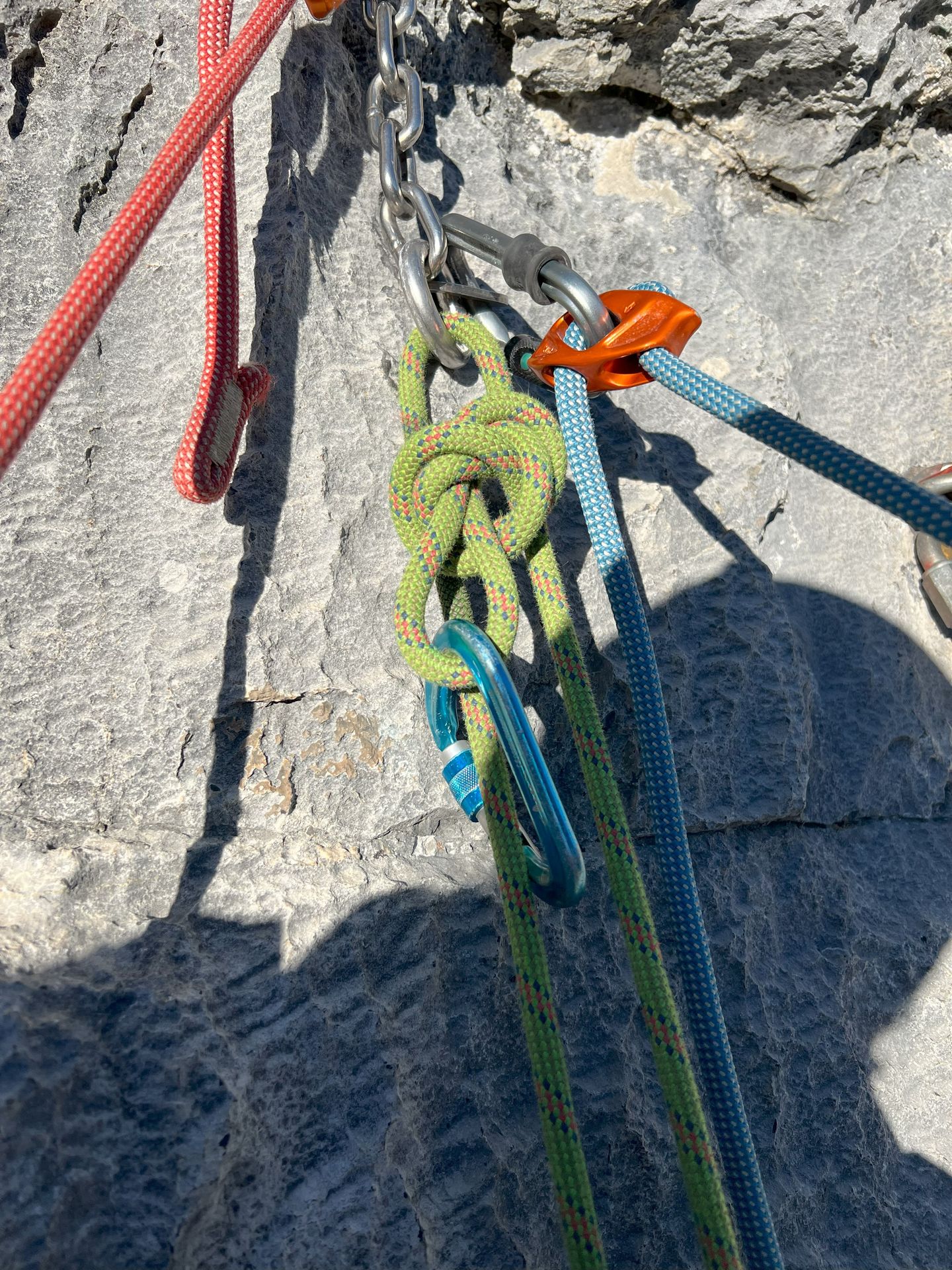Since moving to Canada, I've learned new techniques to make rappelling smoother and more time-efficient. Here are my recommendations for both ATC and Grigri belay devices:
General Setup for Rappelling:
- Anchor the Rope: Pull one side of the rope through the chain ring (or both rings if there’s no chain) until you reach the middle of the rope.
- Tie a Fisherman’s Knot: Tie one on each end of the rope to prevent it from slipping through your belay device in case the rope is too short. I've personally encountered guidebook mistakes where the rope was too short to reach the next anchor, so this precaution is essential.
- Check Your Setup: Before starting the rappel, it's crucial to ensure everything is securely set. Here's how to set up the rope with an ATC and connect it to your harness:
- Feed the Rope Through the ATC: Insert both sides of the rope into the ATC device. Make sure the ropes are positioned correctly within the device so they’ll brake effectively as you descend.
- Connect to Your Harness: Clip a locking carabiner through the two strands of rope and the ATC, then secure it to your belay loop on your harness.
- Use a Sling or Lanyard: Attach a long sling or a lanyard between the carabiner and your harness to provide extra reach and safety during the rappel. Ensure everything is locked and secure before beginning your descent.
Using an ATC for Rappelling:
- Prusik Backup: When I first started climbing, I was taught to always use a prusik backup when rappelling with an ATC. However, I found that this could sometimes lead to problems, like getting stuck in mid-air. After more experience, I realized the prusik is most important for the first person rappelling, as they manage the rope. The second person can rely on the first person holding the rope to act as a backup, saving time and avoiding complications.
- Time-Saving Tips:
- Pre-Setup Devices: While at the anchor, set up both your and your partner’s ATC devices on the rope. This minimizes waiting time when it’s your turn to rappel.
- Assist Your Partner: If your partner struggles with rope management—such as having the rope end too high and getting stuck—the second person can rappel down to help free the rope. This is only possible if you’ve already pre-set your rappel device on the rope at the anchor. Once you reach them and free the rope, find a safe position to pause, allowing your partner to complete their rappel safely.
-
First Person Technique: For the first person rappelling, pull one side of the rope through the next anchor and untie the fisherman’s knots on the other side. This prevents the knots from getting stuck in the previous anchor when you pull the rope down after rappelling.
Using a Grigri for Rappelling:
- Rappelling with a Grigri: Unlike the ATC, you rappel using only one side of the rope. Tie a knot on the other side to secure it through the anchor. To ensure the knot doesn't slip through, clip a carabiner to the loop of the knot. For added safety, you can also run the rope you are rappelling on through this carabiner.
- Efficiency: Using a Grigri is a game-changer for multipitch climbs. It makes belaying from the top much easier, and rappelling becomes significantly faster.

By anticipating your next steps and setting up in advance, you can save a lot of time during multipitch climbs, especially when it comes to rope management and rappelling. With these techniques, you'll find rappelling smoother and more efficient, leaving more time for the fun parts of climbing!